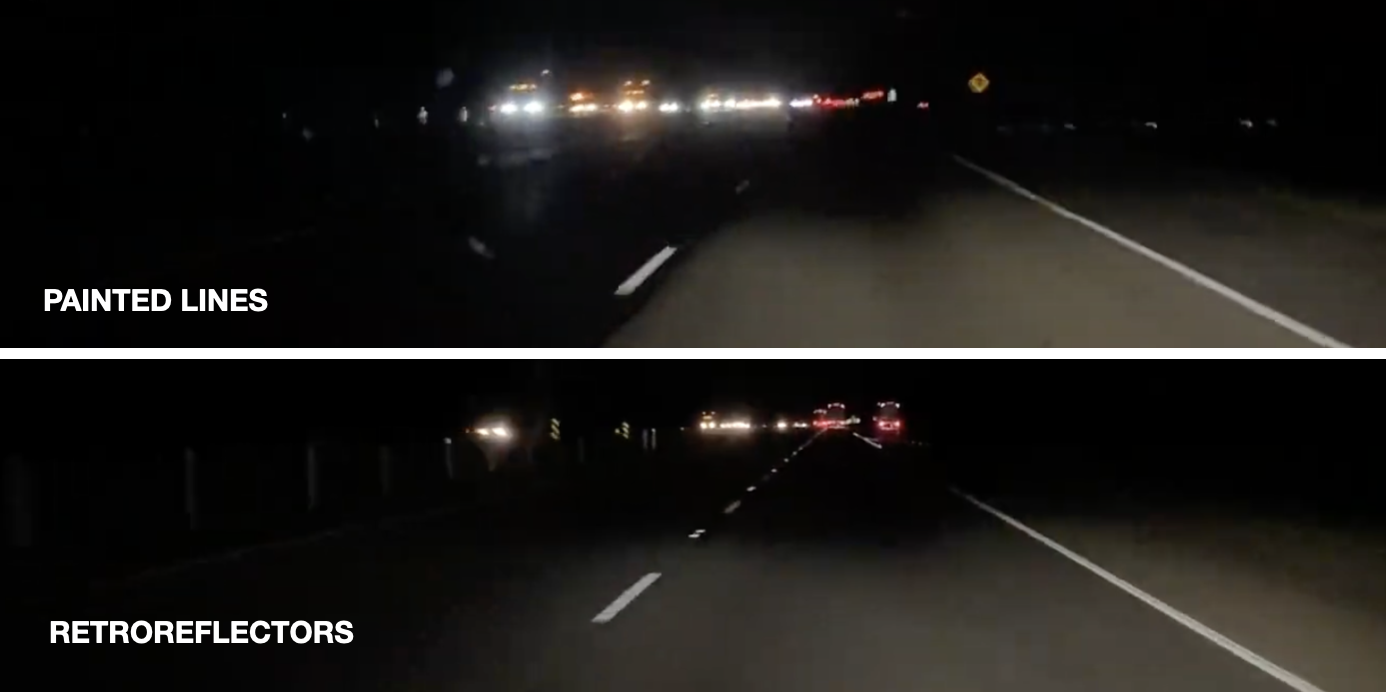A couple of notes: In the diagram, I just drew a human with a flashlight instead of a car with headlights. (I’m sure we can all agree that it’s basically the same thing, right?) For the dry road, I drew a few random rays of light, not all the different ways the light can bounce. The important thing is that one of these rays goes back to the human so that the road is visible to them. However, notice that the total amount of reflected light can’t be more than the incident light, or the light going towards an object. I tried to show this by drawing lighter-colored reflected rays. In other words, the light reflected back to the viewer is always dimmer than the amount of light originally emitted from the source.
For the wet road, all of the light reflects away from the flashlight. If you were in a car approaching from the other side of the road, this light would be glaringly bright. That’s why other cars on the road can make it doubly hard to see when you’re driving in the rain.
Retroreflectors
Retroreflectors are not only used not only for lane markers, but also traffic signs and bike safety gear, to make them more visible to drivers.
A retroreflector doesn’t reflect light in all directions like a dry road, and it doesn’t reflect light away from the source like a flat mirror. Instead, a retroreflector directs the light back towards the source. Yes, if you shine a light at a mirror with a 0° angle of incidence—right towards the mirror—it will come straight back at the source. But with a retroreflector, the light will go back to the source no matter which way it comes from.
While you’re driving, your eyes are on a plane that’s not that far above the one the headlights are on. That means the light bounces from headlight to lane marker and back to the level of your eyes, and you see these reflectors as bright—and that is good, because it helps you stay on the road.
But if you were on the side of the road and a car passed by, you wouldn’t see the lane markers as bright. None of the light from the car’s headlights would reflect sideways and into your eyes.
Here are two images of roads. The top image has lines painted and the bottom has lines with retroreflectors. Can you notice the difference?
Photograph: Rhett Allain
How to Make a Retroreflector
There are different designs for retroreflectors, but I’m going to show you the two simplest ways to get one to work. This first method uses three flat mirrors (they can be as large or small as you like) connected at right angles. Together, these mirrors form the corner of a box. When a light ray enters this retroreflector, it will make multiple reflections, bouncing among the mirrors and ultimately coming back out the way it went in.
Here’s what that looks like using the red and green lasers. I put the two lasers at different angles so that you can see that each beam of light comes back the same way it entered.



